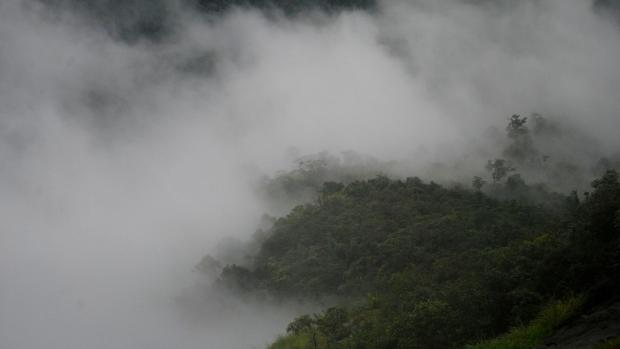
Photo : Purabi Deshpande / Research Matters
Known as the ‘real finance minister of India’, the Indian summer monsoon dictates India’s economy. Agriculture, the backbone of the country’s economy, is heavily dependent on the monsoon rainfall. Thus, predicting the monsoon rains and planning agricultural activities during the monsoon season is vital for a good yield. Accurate prediction also helps water resources planning for urban areas.
The Southeast Asian monsoon, however, is an extremely complex phenomenon and notoriously difficult to predict. The rainfall over Indian peninsula is a result of various changes occurring in the atmosphere before the arrival of the monsoon. As the Sun moves northwards during the summer of the northern hemisphere, a low pressure zone shifts northward into the Indian peninsula from its original position closer to the equator. The low-level westerly jets -- fast flowing narrow air currents in the Earth’s atmosphere -- move northwards and bring moisture into the Indian subcontinent. Scientists monitor all these phenomena closely to make predictions.
As several theories are being proposed to explain the monsoon, its understanding and prediction techniques are still evolving. The Achilles’ heel in planning of crops, water management and other activities is the variation in the monsoon arrival date every year. Based on the atmospheric pressure, sea surface temperature and moisture in the atmosphere, the monsoon arrival dates vary from late May until late June.
Thanks to a new study by researchers from the Indian Institute of Science, Bangalore, there might be good news. The researchers have now developed a new technique that can help predict the correct onset date of monsoon rains in Central India at least month in advance! This study was supported by the Ministry of Earth Sciences (MoES), Government of India under the National Monsoon Mission project.
Today, the Indian Meteorological Department declares the date of onset of monsoon over the state of Kerala. “Onset of monsoon over Kerala is predicted using a statistical model which takes into account several factors like surface temperature and pressure over certain regions of the world. The IMD's model shows a good prediction skill of onset over Kerala, with an error of about 4-days”, says Prof. Arindam Chakraborty of IISc and a co-author of the study. But what about the rest of India? Turns out, monsoon may not arrive in Central India for a fixed number of days after it arrives in Kerala!
The researchers of the study collected historic data from 1948 to 2015 that included rainfall, sea surface temperature and atmospheric parameters for the west Asian region, Arabian sea and the Indian peninsula. The primary finding of this study was that surface pressure conditions in west Asia during the months of March-May have an impact on the onset date of monsoon in Central India.
The researchers observed that the surface pressure in west Asia was on the higher side for the years when monsoon arrived late. As the monsoon moved from the south of India towards the north, one or more breaks of 1-6 days in rain were observed in the region between south India and central India. In addition, the duration and frequency of such hiatus was more during late arrivals of monsoon. Also, the westerly jets were about 2 degrees south during years of late onset as compared to their position during years of early onset.
How can one explain this? The low pressure zone in West Asia strengthens the pressure gradient in the direction from equator to the north pole and the west-to-east winds over the Arabian sea become stronger. The westerly jet, shifted northward, brings more moisture to the Indian monsoon region. This causes a vertical instability in the atmosphere, and creates a condition suitable for convection, and then the onset of monsoon. If the pressure in West Asian region is on the higher side, then it causes delay in the arrival of monsoon.
In addition, due to the higher pressure in west Asian regions, there is intrusion of dry air from the north west region, which inhibits formation of clouds over the Indian monsoon region. This creates the rainfall hiatus mentioned above, as well as delays onset of monsoon over central India.
This is the first time a study provides a mechanism that explains the year to year variation of the arrival of monsoon over central India. “The west Asian surface pressure can be tracked as early as March and results in this study could be used to develop real time prediction systems for the onset of monsoon over central India. This can be instrumental in planning for the water and agricultural resources”, signs off Dr. Chakraborty, talking about the importance of his research.






